Shanghai, China
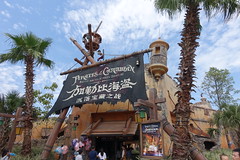 Pirates of the Caribbean: Battle for the Sunken Treasure is an incredible experience. Let’s just get that out of the way first. Every element of the show works together perfectly in concert, sustaining eight minutes of ride time with near-continuous wonder, surprise, and thrill, and with a degree of seamlessness I’ve never before witnessed from a modern theme park attraction. I had my skepticisms, yet by the end of my first ride I was left in near disbelief at what I had experienced. That this is the best dark ride designed for a major theme park (Disney or Universal) within the past decade is a claim I barely needed any persuasion to convince myself of. I was enraptured. And perhaps more
Pirates of the Caribbean: Battle for the Sunken Treasure is an incredible experience. Let’s just get that out of the way first. Every element of the show works together perfectly in concert, sustaining eight minutes of ride time with near-continuous wonder, surprise, and thrill, and with a degree of seamlessness I’ve never before witnessed from a modern theme park attraction. I had my skepticisms, yet by the end of my first ride I was left in near disbelief at what I had experienced. That this is the best dark ride designed for a major theme park (Disney or Universal) within the past decade is a claim I barely needed any persuasion to convince myself of. I was enraptured. And perhaps more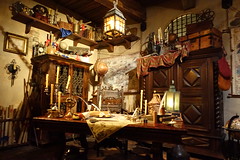 amazing is that, even after multiple re-rides (eight total over two days), that feeling of euphoria seemed to diminish much more slowly than nearly any other attraction of its class, suggesting it had real staying power. Battle for the Sunken Treasure seemed to be the real deal.
amazing is that, even after multiple re-rides (eight total over two days), that feeling of euphoria seemed to diminish much more slowly than nearly any other attraction of its class, suggesting it had real staying power. Battle for the Sunken Treasure seemed to be the real deal.
And yet…
Oh, shush! Let’s enjoy the moment a bit more before going there. (If you’ve read this site for any time you knew I was going to go there eventually, right?)
The achievements on this attraction are manifold,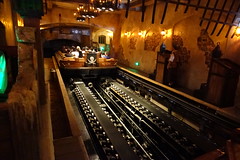 and they far outnumber any specific detractions I could make.1 There are certainly many technical achievements, like the precise Pepper’s ghost illusion that allows a skeleton to transform into a fully dimensional Jack Sparrow in the flesh (or latex, as the case may be), even leaving many theme park professionals wondering for a second how they did it. The size of the two immersive screen sequences are almost too big to comprehend, and when they show us sinking or (especially) rising to and from the bottom of the ocean, I had to check myself on my second ride to make sure we weren’t really moving up and down to a different level. Davy Jones is a marvel, translating one of the most complex CGI villains
and they far outnumber any specific detractions I could make.1 There are certainly many technical achievements, like the precise Pepper’s ghost illusion that allows a skeleton to transform into a fully dimensional Jack Sparrow in the flesh (or latex, as the case may be), even leaving many theme park professionals wondering for a second how they did it. The size of the two immersive screen sequences are almost too big to comprehend, and when they show us sinking or (especially) rising to and from the bottom of the ocean, I had to check myself on my second ride to make sure we weren’t really moving up and down to a different level. Davy Jones is a marvel, translating one of the most complex CGI villains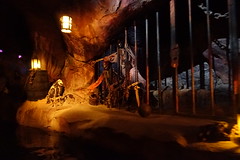 on the big screen into a fully functioning audio-animatronic with stunning realism. And the boats themselves, despite being real floating watercraft, are maneuvered with such effortless precision (including backwards; the ride system is basically an omnimover on water) that the ride hits every story beat with no gaps or redundancies, making that eight-minute ride time feel nearly as complete as Disneyland’s sixteen minute long original.
on the big screen into a fully functioning audio-animatronic with stunning realism. And the boats themselves, despite being real floating watercraft, are maneuvered with such effortless precision (including backwards; the ride system is basically an omnimover on water) that the ride hits every story beat with no gaps or redundancies, making that eight-minute ride time feel nearly as complete as Disneyland’s sixteen minute long original.
But there are also numerous artistic achievements, which is what makes this ride stand out among its peers. As I mentioned, the show’s pacing is tight, but not suffocated from wall-to-wall action and narrative; in my opinion the biggest downfall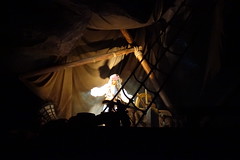 of many contemporary blockbuster theme park attractions. There are several places where the story is allowed to breath, letting a particular mood linger for more than a fleeting second. Most notable among these are the opening act, which artfully recalls some of the 1967’s Pirates’ most influential scenes and sequences while subtly turning them on their head, suggesting a relationship with time nearly as strange as the original; and the gorgeous middle sequence across the ocean floor, where the desolate enormity of the shipwreck lingers in the air as a quiet dread slowly escalates. The music often drives the story more than the dialogue, and while it’s entirely recycled from the film soundtracks,2 they cobble together
of many contemporary blockbuster theme park attractions. There are several places where the story is allowed to breath, letting a particular mood linger for more than a fleeting second. Most notable among these are the opening act, which artfully recalls some of the 1967’s Pirates’ most influential scenes and sequences while subtly turning them on their head, suggesting a relationship with time nearly as strange as the original; and the gorgeous middle sequence across the ocean floor, where the desolate enormity of the shipwreck lingers in the air as a quiet dread slowly escalates. The music often drives the story more than the dialogue, and while it’s entirely recycled from the film soundtracks,2 they cobble together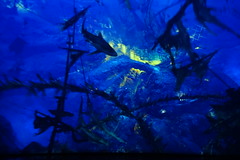 a pretty wide dynamic range that’s never overly reliant on the most recognizable themes except where deserved.
a pretty wide dynamic range that’s never overly reliant on the most recognizable themes except where deserved.
Despite the many blockbuster moments, if I had to pick one moment that early on became my favorite of the entire attraction (and I’ve heard others echo this same sentiment), it would be the transition from the first large screen into the ocean floor scene. During this sequence, we witness a sleeping kraken awaken after being disturbed by one of Davy Jones’ crew members, where it… calmly swims away. The wooden frame of a sunken ship blocks our view of the beast as we transition away from the massive screen, yet if we follow its rate of movement across the wooden beams above us,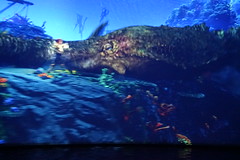 we soon see it emerge on the other side of the shipwreck, on a second screen. It’s a powerful moment in part because the transition from one screen to the next is so flawless and the framing is so convincing that for once I had to convince my eyes I actually was still looking at a screen. Yet possibly more important to making this scene work as well as it does is the fact that the monster has no apparent interest in us. Despite the obvious threat, it doesn’t attack. We are of utter insignificance to this titan’s own story, and as we watch it fade into the blue abyss towards its next destination of which we can have no knowledge, that’s the exact moment when we apprehend the full enormity of this world and the
we soon see it emerge on the other side of the shipwreck, on a second screen. It’s a powerful moment in part because the transition from one screen to the next is so flawless and the framing is so convincing that for once I had to convince my eyes I actually was still looking at a screen. Yet possibly more important to making this scene work as well as it does is the fact that the monster has no apparent interest in us. Despite the obvious threat, it doesn’t attack. We are of utter insignificance to this titan’s own story, and as we watch it fade into the blue abyss towards its next destination of which we can have no knowledge, that’s the exact moment when we apprehend the full enormity of this world and the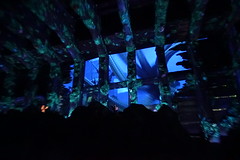 limitless possibilities it presents. It is, to use the philosophical definition of the term, sublime.
limitless possibilities it presents. It is, to use the philosophical definition of the term, sublime.
It’s worth pausing to consider this effect for a second, because it’s a distinct reversal of the modus operandi of most contemporary multimedia-based themed attractions which place an almost solipsistic emphasis on the primacy of our own perspective. No matter the scale of the environments or the stakes of the action, everything revolves around us. If you notice something happening in the distance, chances are nearly certain it will soon find its way in front of your face. The dialogue is either always to us, about us, or for us (by reiterating plot points the characters should already know). Every character’s purpose for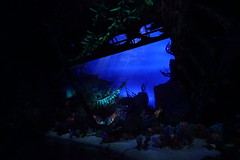 existence is apparently defined by their relationship to us. This world may appear vast on the surface, but you get the tingling impression that none of it would be there if it wasn’t for us being there to witness it, nor that the world believably continues beyond our frame of view. It makes its fictional universe feel incredibly small. If there’s one thing that Battle for the Sunken Treasure seems to get right in this moment with the disinterested kraken, it’s that it returns to the tradition of classic attractions that built worlds you’d move through rather than narratives that move around you.
existence is apparently defined by their relationship to us. This world may appear vast on the surface, but you get the tingling impression that none of it would be there if it wasn’t for us being there to witness it, nor that the world believably continues beyond our frame of view. It makes its fictional universe feel incredibly small. If there’s one thing that Battle for the Sunken Treasure seems to get right in this moment with the disinterested kraken, it’s that it returns to the tradition of classic attractions that built worlds you’d move through rather than narratives that move around you.
And yet…
As the first Pirates of the Caribbean ride wholly based on the movie franchise, there’s no doubt that Battle for the Sunken Treasure shares little with its subtitle-less predecessors beyond its main title and core theme, and is far more closely related to cinematic style of themed attractions that can be traced back at least the late 80’s with Star Tours and Back to the Future: The Ride, and continuing on with Indiana Jones to Transformers and more. Besides simply being based on movies, they all evince a cinematic understanding of space and time, using their dynamic ride systems and reliance on multimedia to make sudden transitions between scenes that conceptually translates as hard cuts and scene changes, and establishing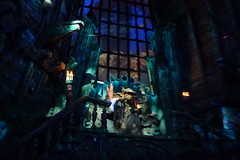 a quick-paced temporal rhythm that would be impossible to maintain in the real world but feels familiar in the hyperreal realm of the modern movie theater.
a quick-paced temporal rhythm that would be impossible to maintain in the real world but feels familiar in the hyperreal realm of the modern movie theater.
Unlike the classic Pirates of the Caribbean attractions, which are still bound by physics and move with a steady deliberateness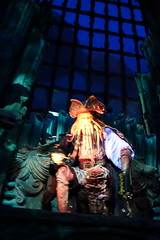 that retains a sense of weightiness to their worlds, Battle for the Sunken Treasure is more than happy to fully immerse us in its own hyperreality where physics is whatever we
that retains a sense of weightiness to their worlds, Battle for the Sunken Treasure is more than happy to fully immerse us in its own hyperreality where physics is whatever we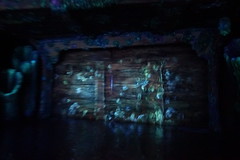 imagine it to be, and the world moves at the pace of the story rather than the other way around. Yet among this class of attraction, Battle for the Sunken Treasure is to my mind the undoubted champion, primarily because it still understands a thing or two about pacing, and is still willing to accommodate longer moments of “trickier” emotions such as wonder and suspense…
imagine it to be, and the world moves at the pace of the story rather than the other way around. Yet among this class of attraction, Battle for the Sunken Treasure is to my mind the undoubted champion, primarily because it still understands a thing or two about pacing, and is still willing to accommodate longer moments of “trickier” emotions such as wonder and suspense…
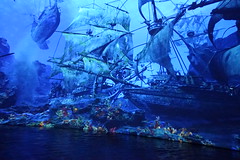 And then a strange thing happened.
And then a strange thing happened.
After I got home, I happened across a YouTube video of the ride that finally offered subtitles to the Chinese dialogue. They are, of course, completely unnecessary to understand the attraction. The name “Battle for the Sunken Treasure” already gives you all the information you need, and so much of the ride is communicated visually and musically that the dialogue worked just fine on a completely abstracted level. It signified a character was angry, nervous, mischievous, or so on, which was all the emotional cue I needed to imagine the feeling of an epic tale of adventure unfolding around. I couldn’t guess what these words were,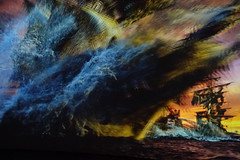 but I could imagine the feeling they’d create with their idealized meaning.
but I could imagine the feeling they’d create with their idealized meaning.
But once I finally understood the literal meaning of those words, not only was I disappointed by the poor quality of the writing,3 but I found it retroactively diminished my appreciation and memories of the entire ride. All at once, that world I remembered as being so mysterious and full of possibility was reduced to… an old couple bickering over money. Virtually every line of dialogue is a variation of “we’re going to steal the treasure,” or “we’re going to fight over the treasure,” presumably so the plot is clear for riders with no unnecessary complications, but the single-minded repetition eventually robs all weight from any of the words,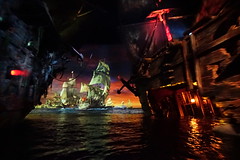 and I’d rather they just stop talking altogether. Despite the scale of the action, nothing in either Jack Sparrow nor Davy Jones’s lines indicates that they find these events all that extraordinary, as they seem motivated either by a lark or by annoyance, respectively, and the situation reads as one they’ve both seen play out numerous times before, and expect to encounter many times again in the future. This once limitless world with dialogue added to it now becomes a stage where nothing and no one has an evident purpose or history beyond their role in advancing a single plot that’s of marked inconsequence to everyone involved. The mystery of the kraken’s story no longer matters; what matters is that our story involves seeing a cool-looking
and I’d rather they just stop talking altogether. Despite the scale of the action, nothing in either Jack Sparrow nor Davy Jones’s lines indicates that they find these events all that extraordinary, as they seem motivated either by a lark or by annoyance, respectively, and the situation reads as one they’ve both seen play out numerous times before, and expect to encounter many times again in the future. This once limitless world with dialogue added to it now becomes a stage where nothing and no one has an evident purpose or history beyond their role in advancing a single plot that’s of marked inconsequence to everyone involved. The mystery of the kraken’s story no longer matters; what matters is that our story involves seeing a cool-looking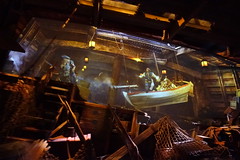 kraken on our way to steal the treasure… which every voice we hear along our journey will be sure to reiterate so we’re not confused that anything besides that singular perspective is of any importance within this world. You are not free to imagine your own stories or thrust your own interpretations upon this work that the authors have not specifically approved for you through the script… unless you don’t speak the language, that is.
kraken on our way to steal the treasure… which every voice we hear along our journey will be sure to reiterate so we’re not confused that anything besides that singular perspective is of any importance within this world. You are not free to imagine your own stories or thrust your own interpretations upon this work that the authors have not specifically approved for you through the script… unless you don’t speak the language, that is.
In a way, it was the perfect test case. This attraction with strictly literal story and clearly defined plot and dialogue is actively worse than the exact same attraction with an abstract story and ambiguous plot and dialogue. I guess the biggest reason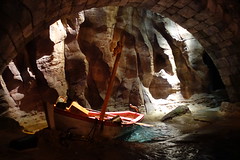 is simply that, once I found out what the story was, I also found out that it sucks. Disney makes it very clear that, to them, story matters… yet they often neglect to tell stories that matter. There is absolutely nothing essential about this story of the sunken treasure and the battle that follows, beyond the fact that it ties together a few cool scenes and set pieces and gives a signal boost to the franchise.
is simply that, once I found out what the story was, I also found out that it sucks. Disney makes it very clear that, to them, story matters… yet they often neglect to tell stories that matter. There is absolutely nothing essential about this story of the sunken treasure and the battle that follows, beyond the fact that it ties together a few cool scenes and set pieces and gives a signal boost to the franchise.
That’s not to say that the original attractions told better stories, rather, just that they have less of it… and let us tell our own story with it. In the absence of an explicit narrative, the original Disneyland pirates is full of themes and subtext that allows for an incredibly malleable, timeless story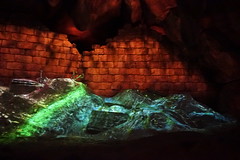 that can be interpreted in countless ways. Heck, I could make a pretty strong argument for interpreting the Disneyland pirates from both Marxist4 and Heideggerian5 perspectives, and while I have no illusions that any of that might have been intentional on behalf of the designers, it doesn’t matter because the subtext is rich enough to be source
that can be interpreted in countless ways. Heck, I could make a pretty strong argument for interpreting the Disneyland pirates from both Marxist4 and Heideggerian5 perspectives, and while I have no illusions that any of that might have been intentional on behalf of the designers, it doesn’t matter because the subtext is rich enough to be source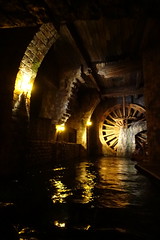 of all kinds of interpretations. On Battle for the Sunken Treasure, there is no subtext. It’s all just text, and now that I’ve been given that text, I can’t give it back. I still appreciate the immense skill and craftsmanship
of all kinds of interpretations. On Battle for the Sunken Treasure, there is no subtext. It’s all just text, and now that I’ve been given that text, I can’t give it back. I still appreciate the immense skill and craftsmanship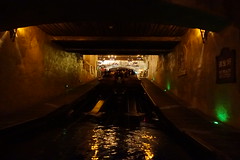 required to make Battle for the Sunken Treasure, all of which coalesces into an immersive sensory experience unlike any other, one that easily ranks among the greatest of contemporary theme park attractions for its technical and artistic achievements. But as that initial “wow” of the kraken continues to fade into the abyss of time and memory, I realize I’m left with not much more.
required to make Battle for the Sunken Treasure, all of which coalesces into an immersive sensory experience unlike any other, one that easily ranks among the greatest of contemporary theme park attractions for its technical and artistic achievements. But as that initial “wow” of the kraken continues to fade into the abyss of time and memory, I realize I’m left with not much more.
Welcome back! Where were we? Oh yes, Treasure Cove!
Treasure Cove is one half of the mega-Adventureland zone of Shanghai Disneyland, combined with the adjacent Adventure Isle. Themed to a colonial Caribbean port town, it also takes a little bit of inspiration from New Orleans Square with this tight little city street named Calle 42 that you can explore behind the Pirates of the Caribbean exit and running adjacent to the main midway.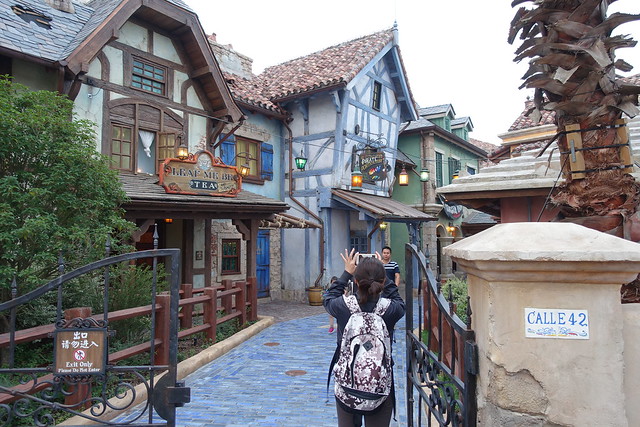
As you can see, not many people were taking the scenic route. It seems the Chinese are still very much in the “marquee mentality” when it comes to their theme parks, and few have much interest in exploring the smaller discoverable experiences that aren’t necessarily labeled on the map.
On the one hand, this street, along with Camp Discovery in Adventure Isle, are easily the most detailed and immersive environments you can walk through in Shanghai Disneyland.
On the other hand, I found it a little too cartoony and pastel to feel convincingly part of the Pirates of the Caribbean universe. I’m sure they looked at the authentic set designs from the movie, decided it was uniformly too grey and brown, and thus cranked the “toontown” meter up by 33% to get concept drawings that a Chinese focus group would respond more favorably towards.
One unfortunate theme park trend (on par with expository voice-over narration of what an on-screen character is thinking): designers attempting “immersive world-building” by adding a panel sign that has no purpose other than to just directly tell you what the backstory is supposed to be.
Another unfortunate trend of IP-based theme park lands where characters that should have nothing to do with this area suddenly become small business owners with their own food or retail outlets that reflect their personality a little too much. Below I present Pintel & Ragetti’s Grub to Grab, based on two minor characters from the films who are improbable candidates as landlubbing shop owners and even more improbable that anyone will actually remember their names from the film anyway.
In this category we also have Barbossa’s Bounty, named after the villainous ghost ship captain from the first film, in which his self-named restaurant is naturally designed to look like a ship. Because what else could better communicate the story of “I’m a facade based on somebody’s concept sketch and you’re in a theme park!“
Inside, the food is… passable. I believe I got the BBQ pork rib with rice and corn.
It’s a quick service restaurant that tries to recreate the setting of the Blue Bayou with Pirates of the Caribbean passing by, although not as effectively due to the obvious limitations of self-seating over table service to sustain a unique atmosphere. (The ride was E-stopped in this photo, which is why the work lights are on.)
On the opposite side of the main midway is Shipwreck Shore, a children’s play and discovery area.
For some reason part of it was trying to do a “dry-for-wet” underwater coral reef setting, which really makes no sense here but otherwise is in line with the somewhat toonish aesthetic of the rest of the land.
These giant levered fishing lines were the most fun interactive in this area, where you could reveal from underwater either a skeleton hugging a treasure chest or a (rusty?) shark.
The Explorer Canoes row past, which board from the distant Adventure Isle.
Did I mention just how massive this combined eastern “Adventureland” hemisphere of the park is, especially in comparison to the extremely compact Tomorrowland balancing it on the western side?
The main attraction in Shipwreck Shore is the shipwreck, which you can climb to the upper deck, look out at things, and… well, that’s about all there is to do up here.
Further along the waterfront we find the Siren’s Revenge, another ship as a walking exploration attraction.
Or is it called Landlubber Landing? I’m confused. Pick one marquee and stick with it!
Here we have a few wooden figurehead models for sale, some in better condition than others. For some reason I find the third one oddly satisfying.
While the exterior is painted with a few too many colors for my tastes, the interior is actually quite good, with lots of fun details to explore across multiple decks.
Here’s a map to guide us. Yes, someone at Imagineering actually wrote the lyrics to an entire sea shanty, had it translated into Chinese, printed in the corner of this graphic that no one’s going to take the time to read, let alone figure out what tune it should be sung to.
The upper interior deck, besides the captain’s quarters and these “magick curios,” also includes these talking paintings of characters from the film. Each will come to life and give you a quest, although as far as I could tell there’s no actual payoff for following their directions, it’s just a request to look at a different area of the ship you may have already seen anyway.
The outdoor deck provides decent views of Treasure Cove and the rest of the park. This central water feature is surprisingly large, a much bigger impact on the park layout than the Rivers of America.
The lower deck is stuffed from floor to ceiling with props and artifacts. Fans of the Sailing Ship Columbia at Disneyland will find it especially worth their while to check out the Siren’s Revenge.
Treasure Cove is also home to the turkey leg stall, Tortuga Treats, which you can see is extremely popular.
It’s only open limited hours, from 2:00pm until I guess whenever they sell out. I guess a whole turkey leg is a distinctly American food oddity that nevertheless strongly appeals to the Chinese palate. Clearly everyone is very excited to be waiting in line this long to get one.
Lastly is Eye of the Storm: Captain Jack’s Stunt Spectacular at El Teatro Fandango, because why give your show one name when you can give it three?
By the way, look at the interval of the show times. Each show lasts about 35 minutes. This is only physically possible because the show is divided between a pre-show and a main show, but it’s still nuts. The queue is basically continuously loading. There has to be at least two casts performing at all times, possibly more.
Here’s the holding queue for the show, with a few themed details.
The preshow, which as it often is with these things, is standing only. The storyline is actually pretty involved in here, with numerous cues for effects and most of the main cast present, it isn’t just vamping for time as you usually get with these types of shows.
Unfortunately they don’t offer any English language performances, so I had to experience it all in Mandarin, which I don’t speak. This was possibly the one attraction in Shanghai Disneyland where you are at a significant disadvantage if you don’t speak the local tongue, although I wouldn’t recommend avoiding just for that reason. The broad strokes of the story are still obvious (it’s a stunt show after all), but there’s some character details and backstory that’s definitely lost.
We then go into the main theater. Everyone has to fill every available seat in a very short amount of time.
Okay, I have no idea what’s going on here.
But then Captain Jack inevitably swings in on a wire and crashes the show.
He’s actually quite good as a Jack Sparrow impersonator, especially considering he also has to do stunts, speak Mandarin, and be white, and there must be several of them working on any given day.
But then the British show up and blow the theater to smithereens, in what’s actually a pretty awesome reveal.
Nothing says family entertainment like a good old-fashioned hanging!
Of course Jack doesn’t hang, but there’s lots of swashbuckling instead.
They don’t call it Eye of the Storm for nothing. First you see the cyclone approaching on that giant media screen in the background…
And then an actual cyclone forms on stage, with the stunts taking place in mid-air. Considering it’s basically watching people hang out in an iFly, it’s still pretty cool.
Again, this show resets and repeats every half hour. The next show has already begun in the room behind us as the cast takes a bow.
Overall a really solid show, given the limitations of the “theme park stunt show” format. I skipped the other shows in Shanghai Disneyland, but it’s pretty clear that this is the only one that really matters. Don’t miss it.
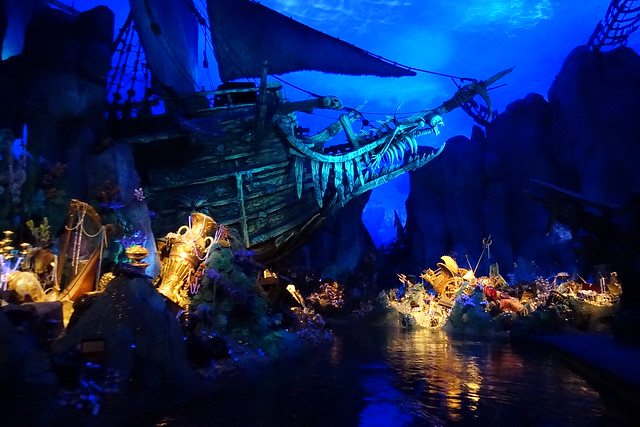
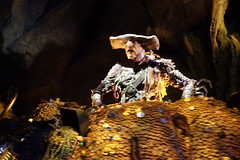
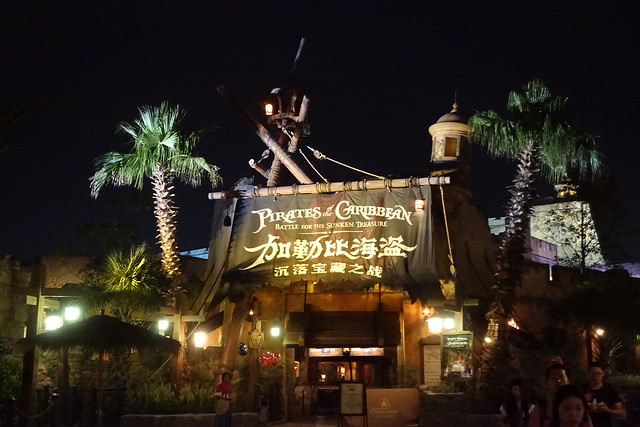
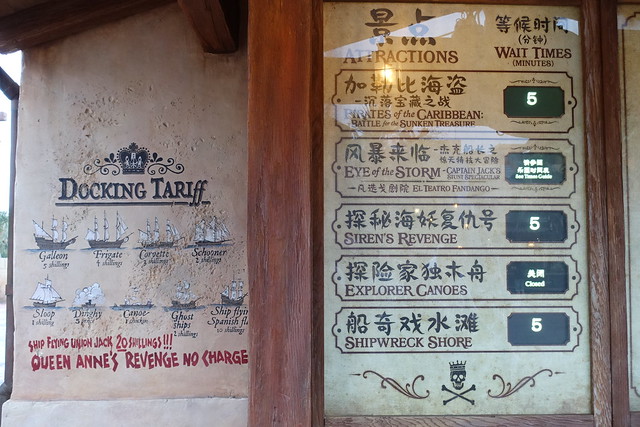

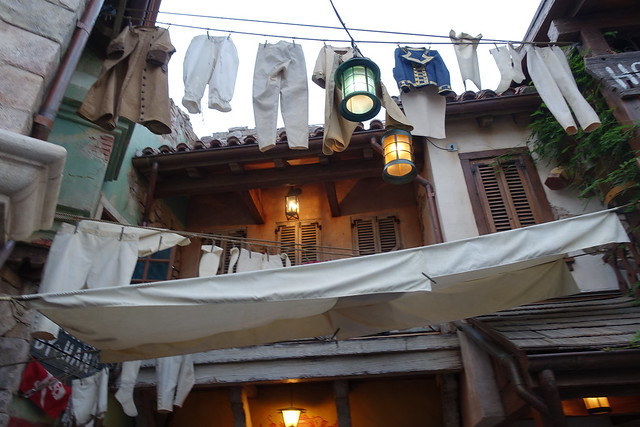
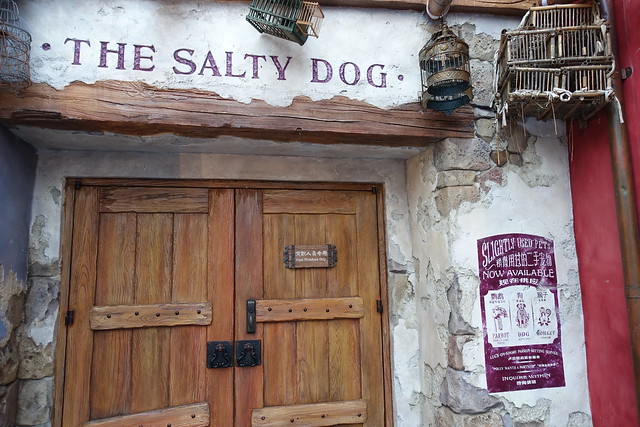
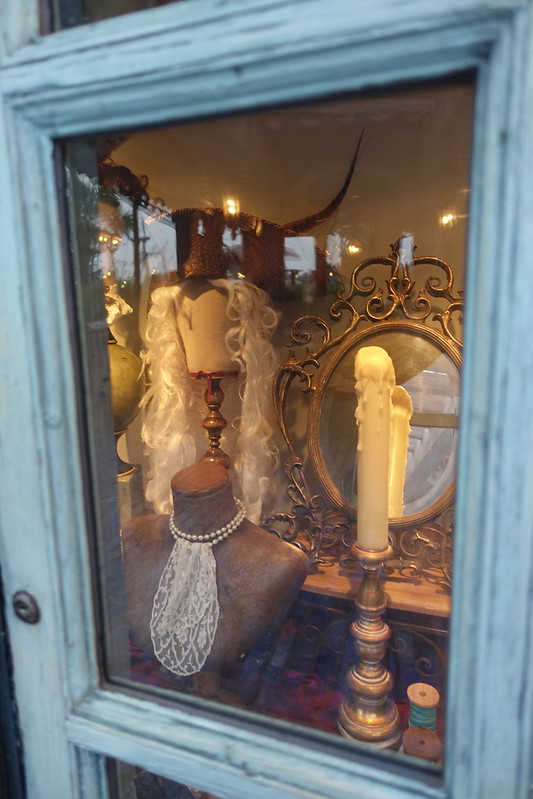
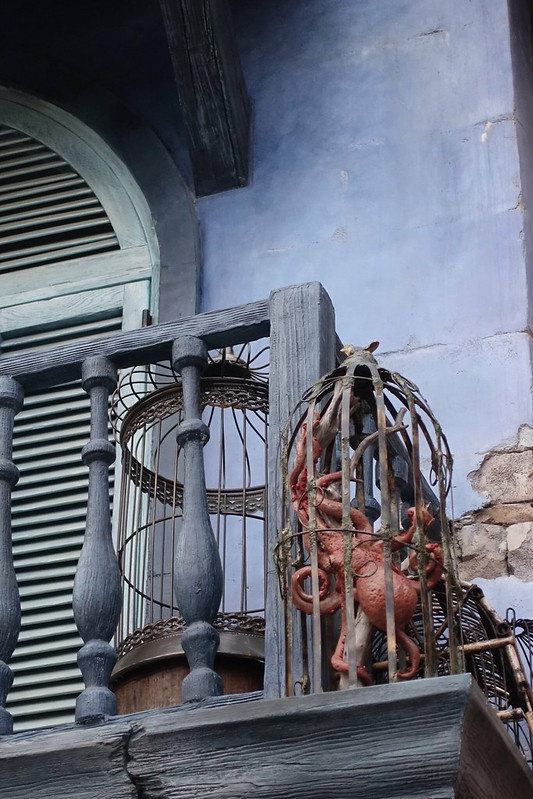
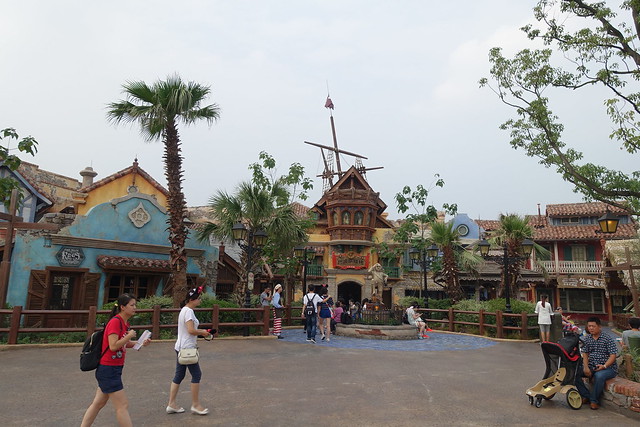
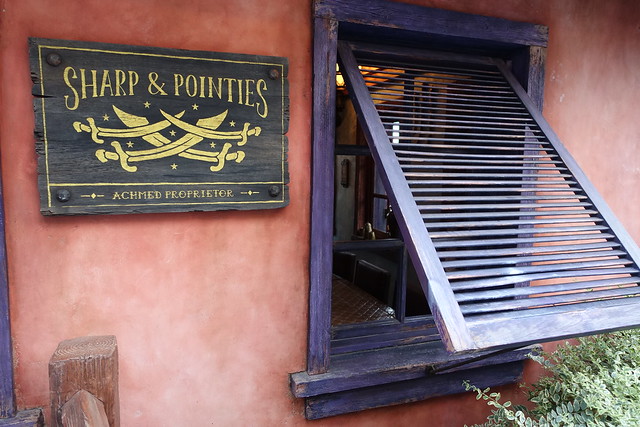
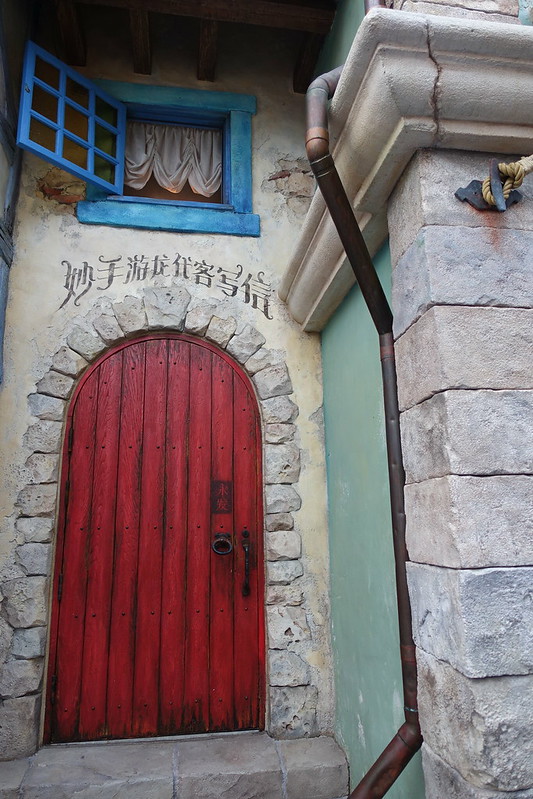
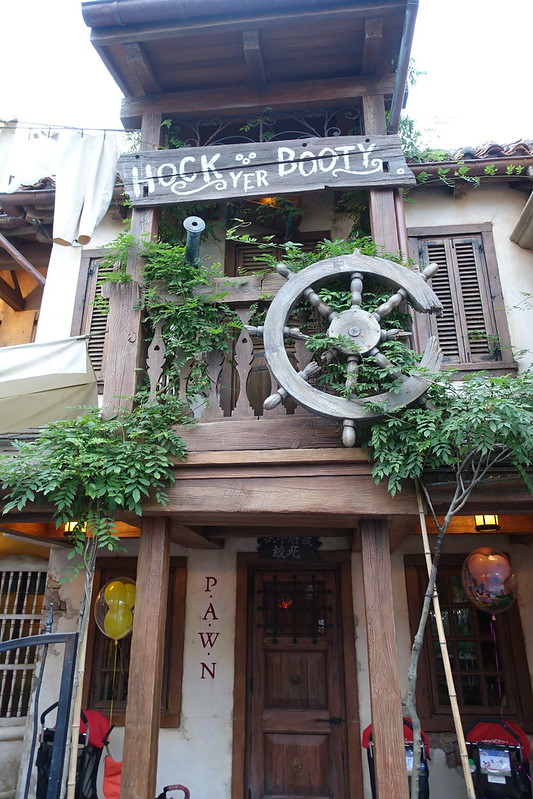
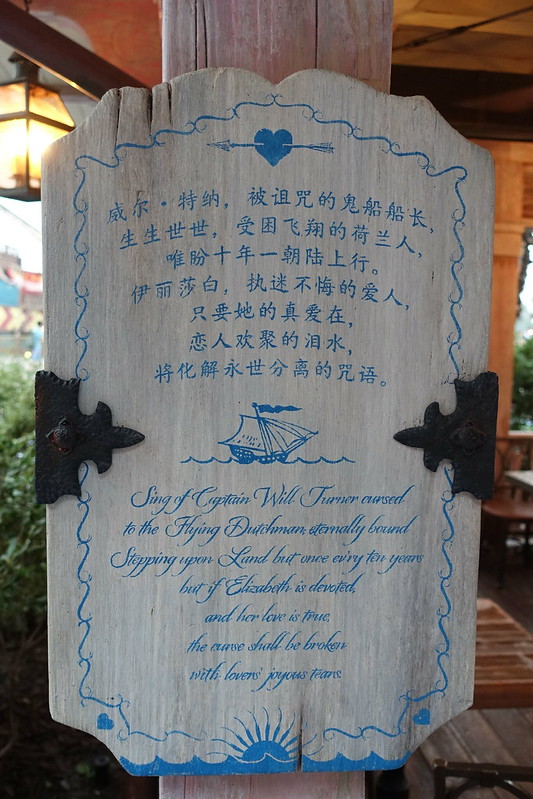
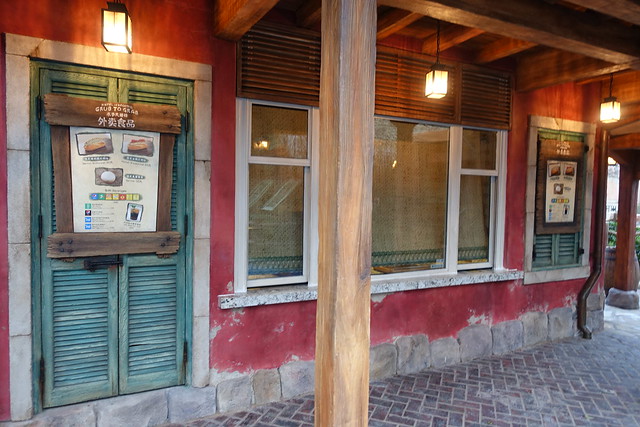


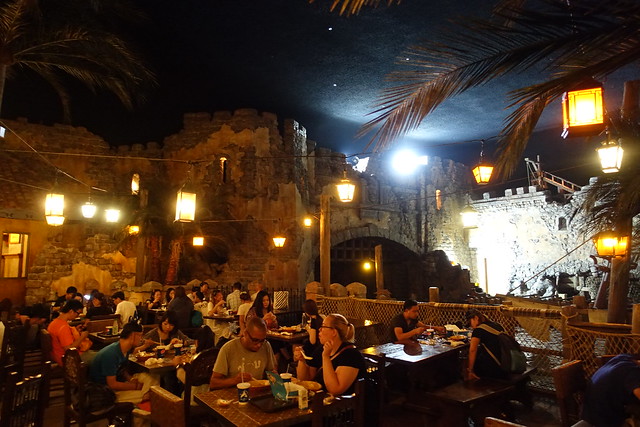
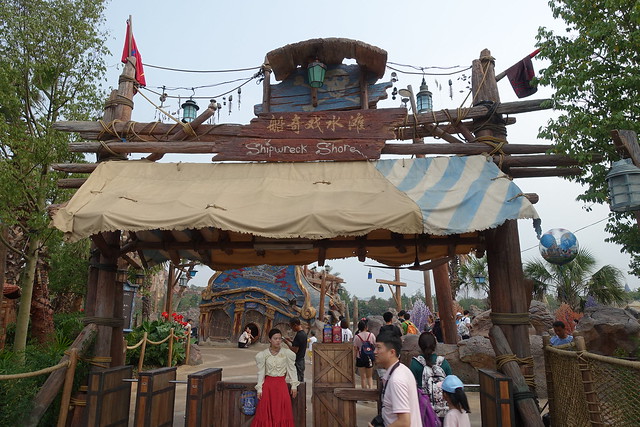
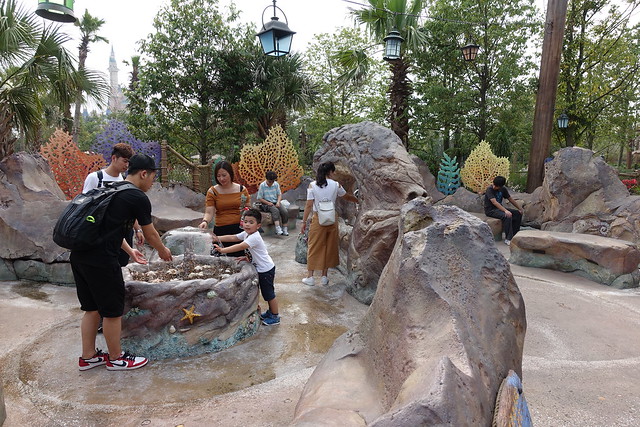
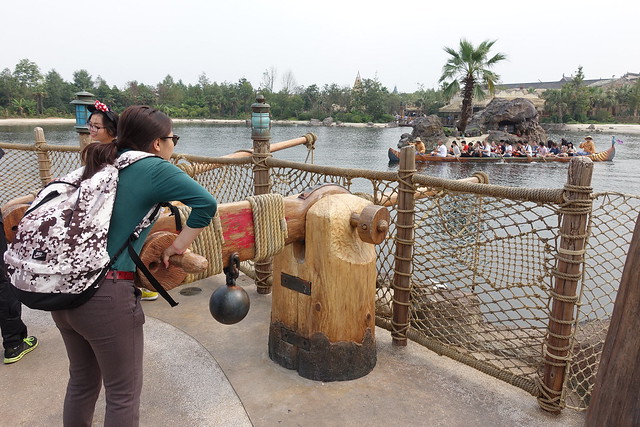
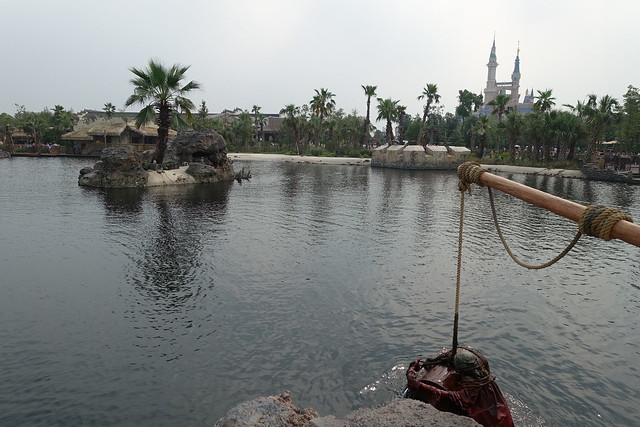

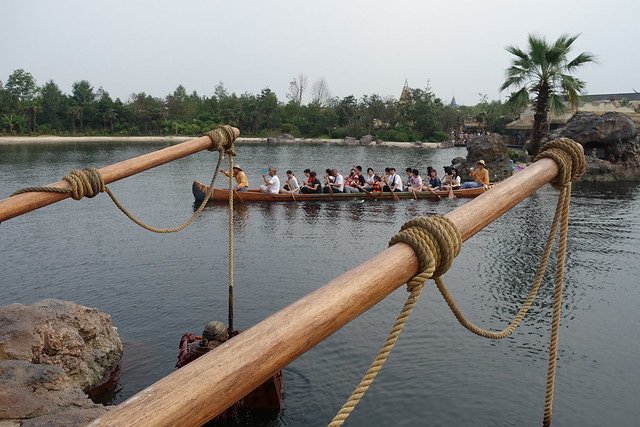
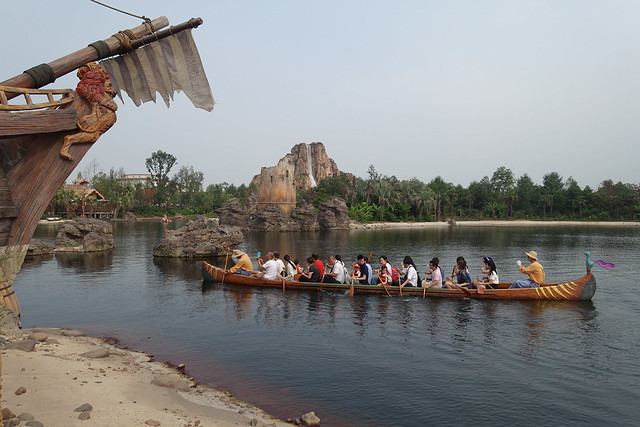
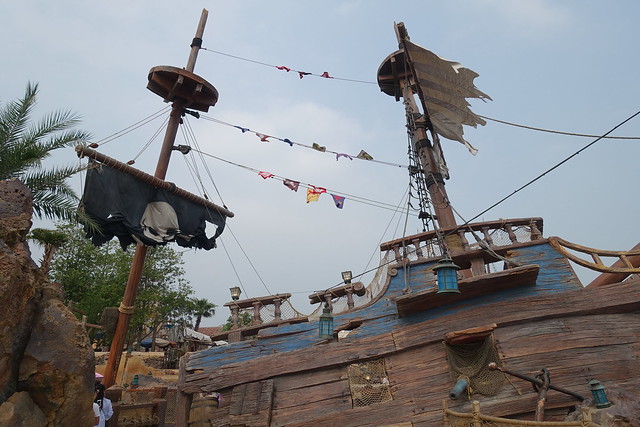
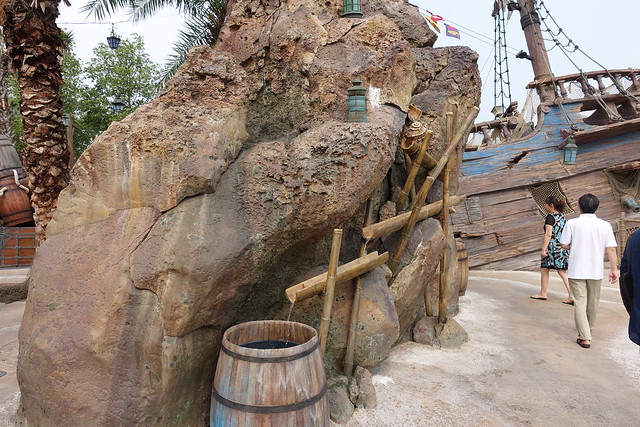
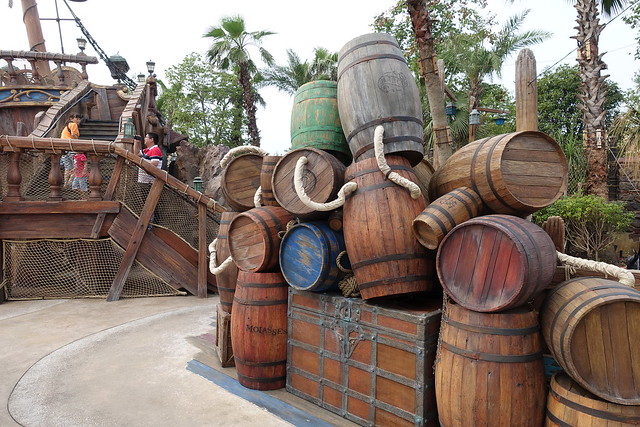
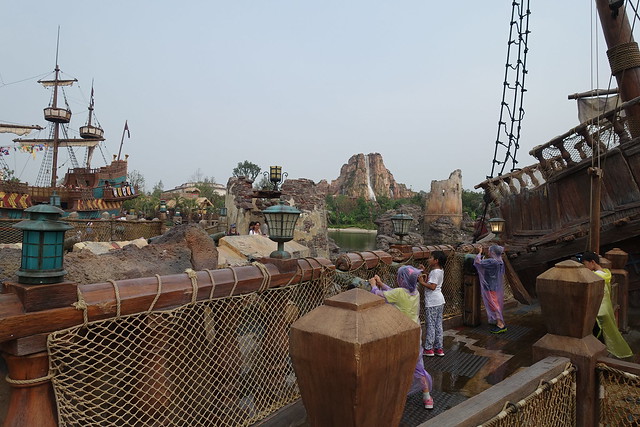
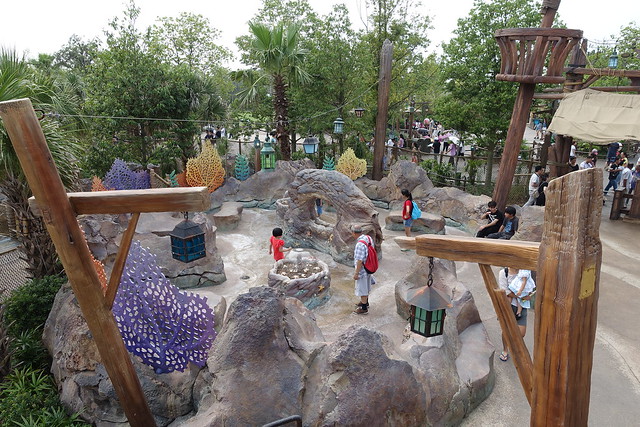
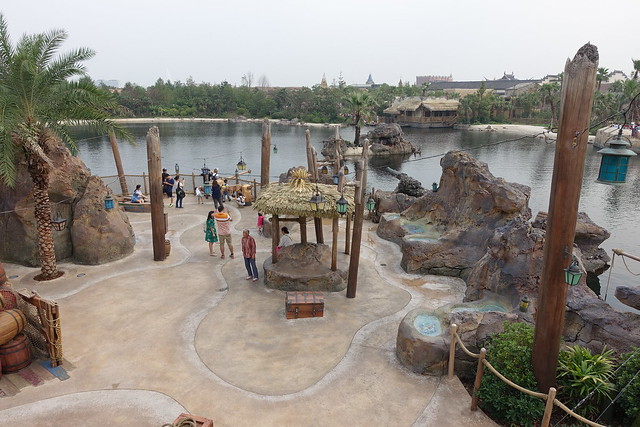
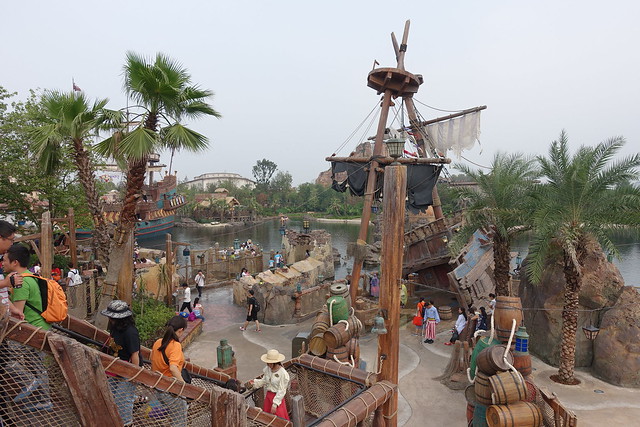
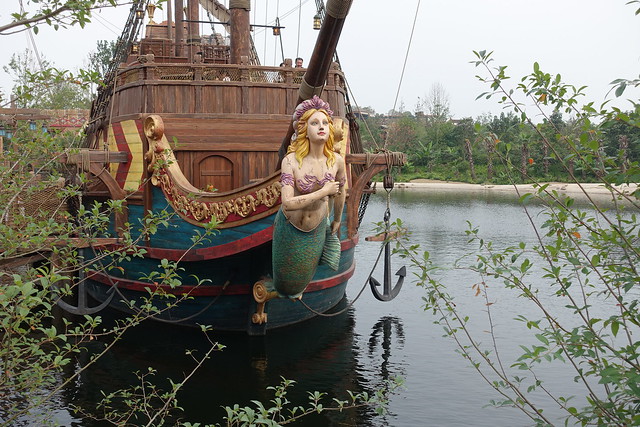
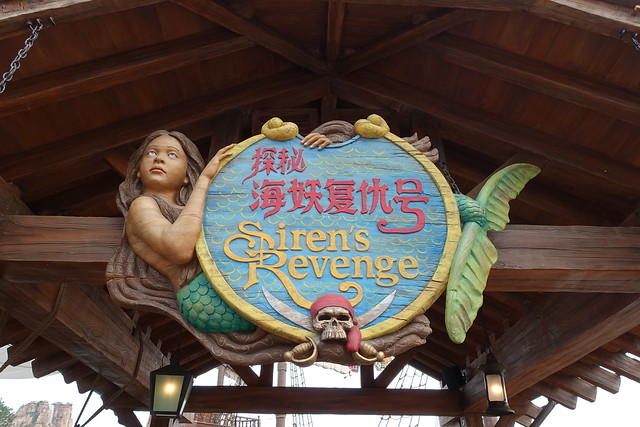
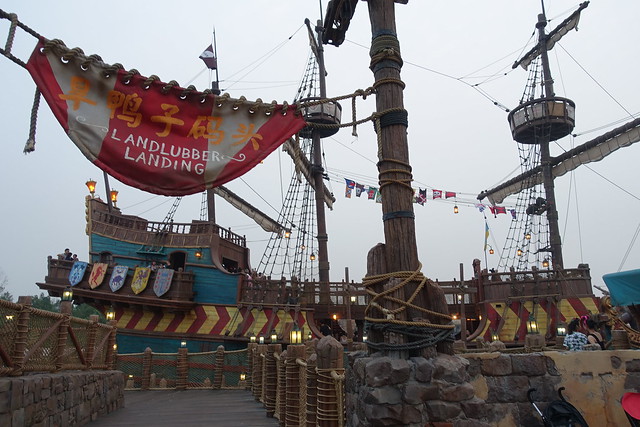
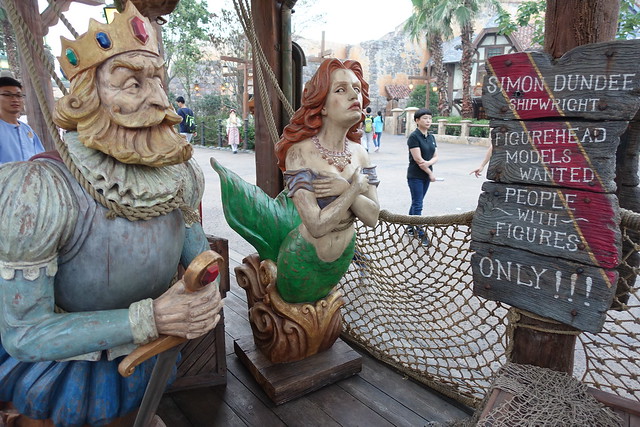
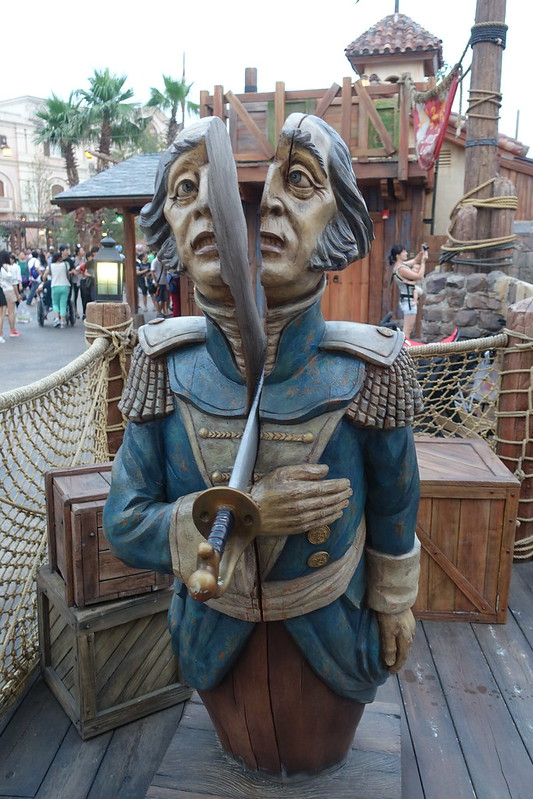
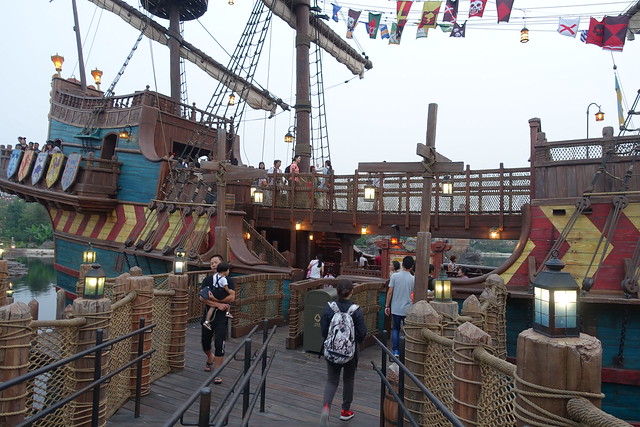
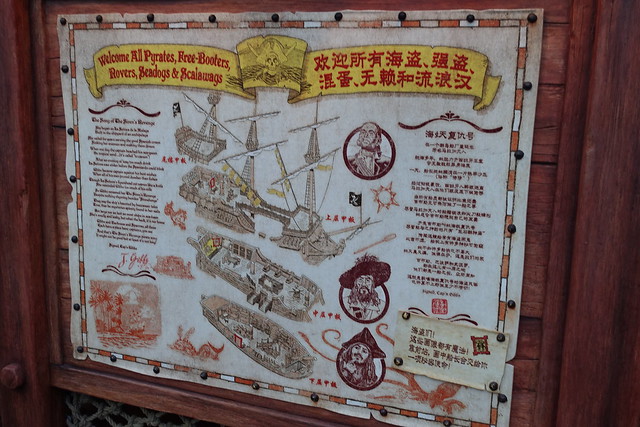
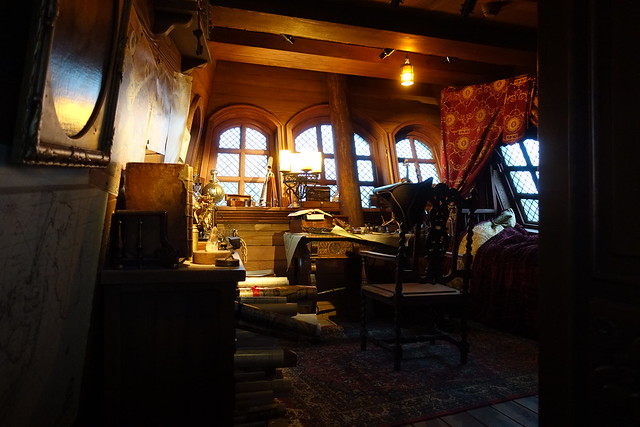
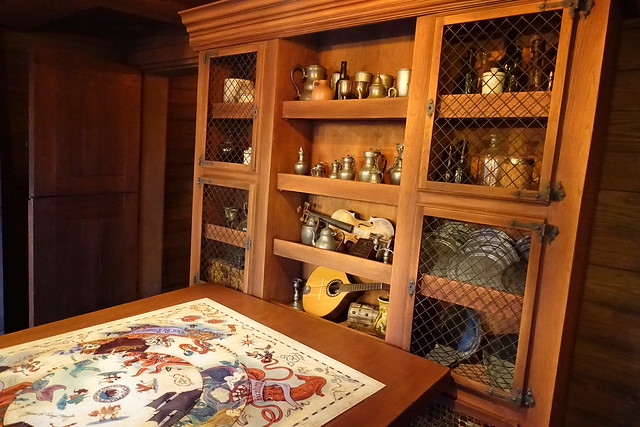
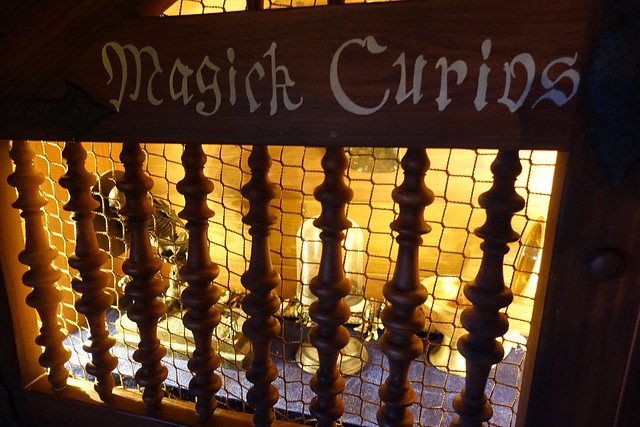
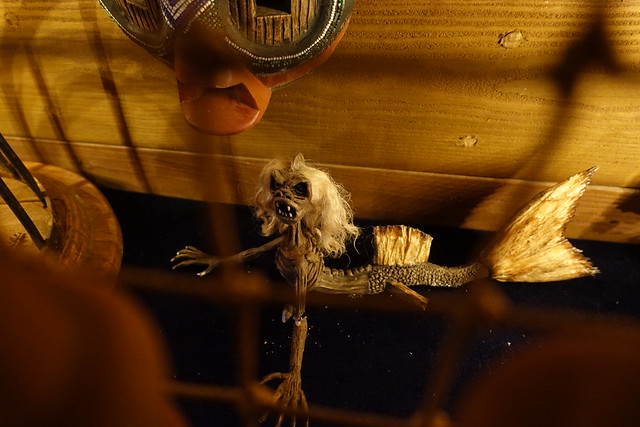
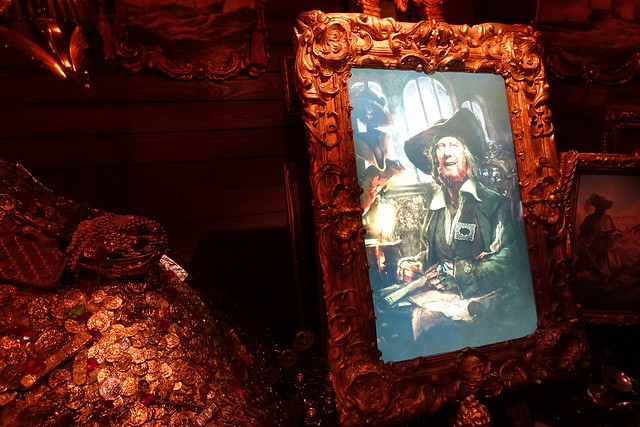
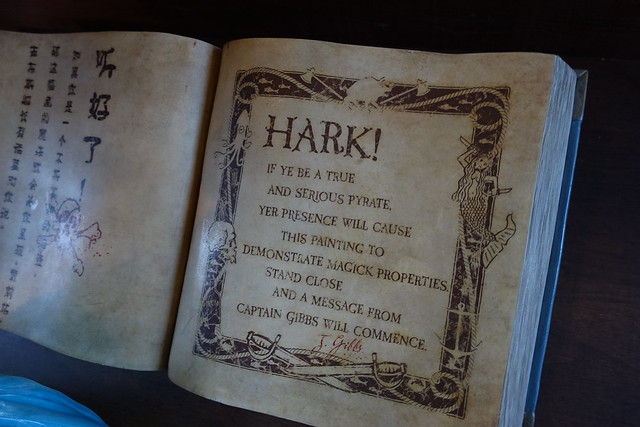
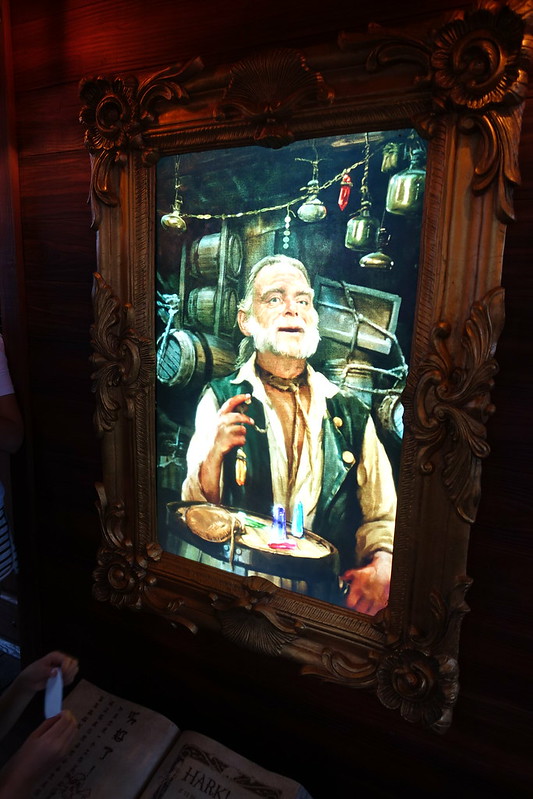
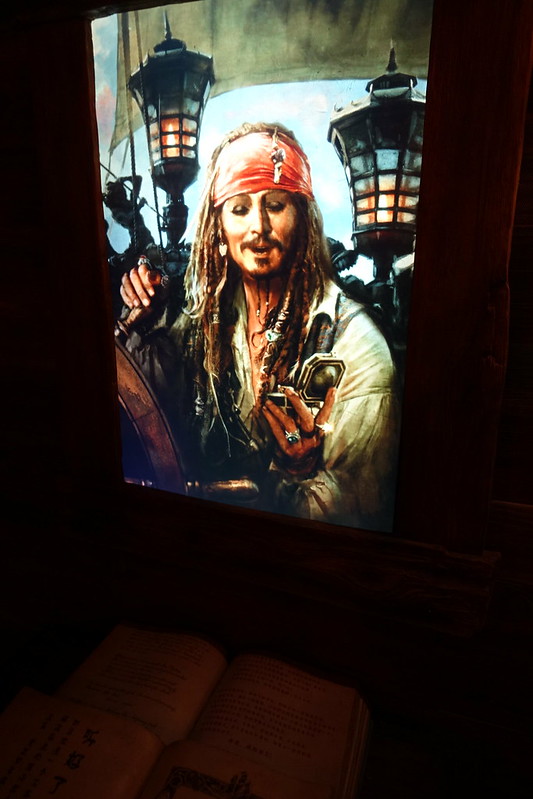

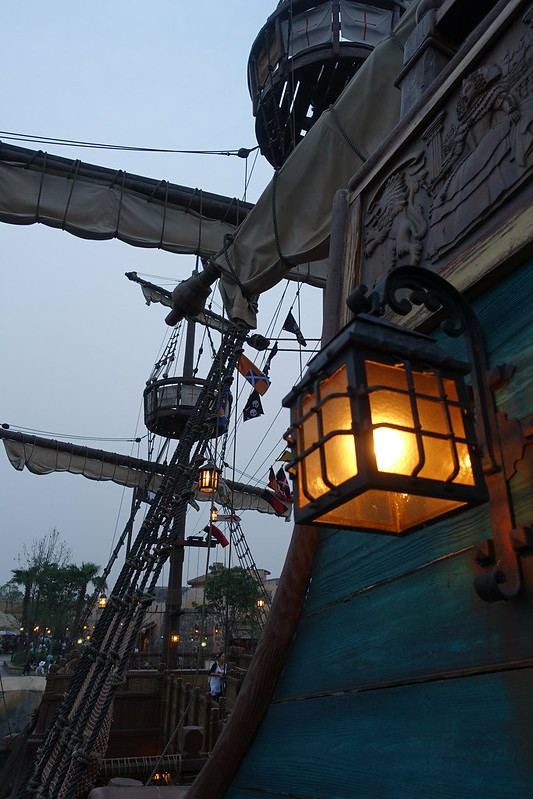
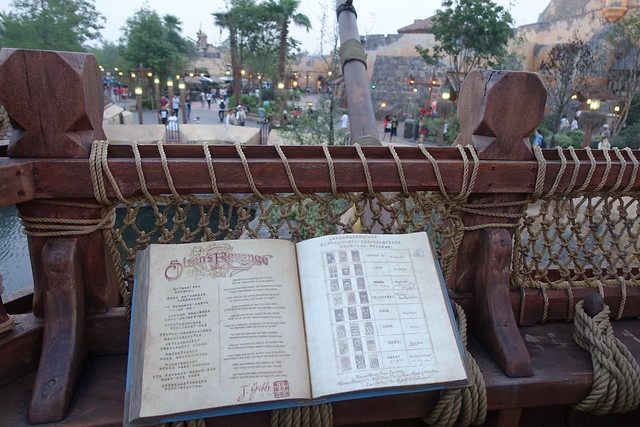
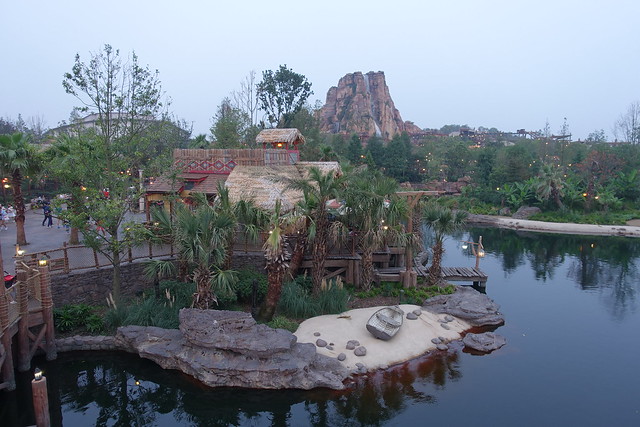
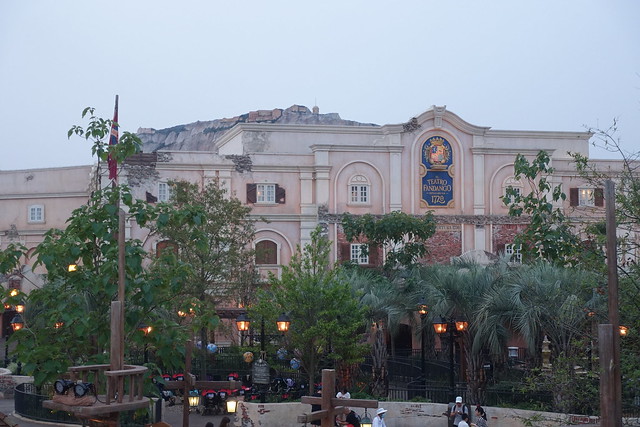
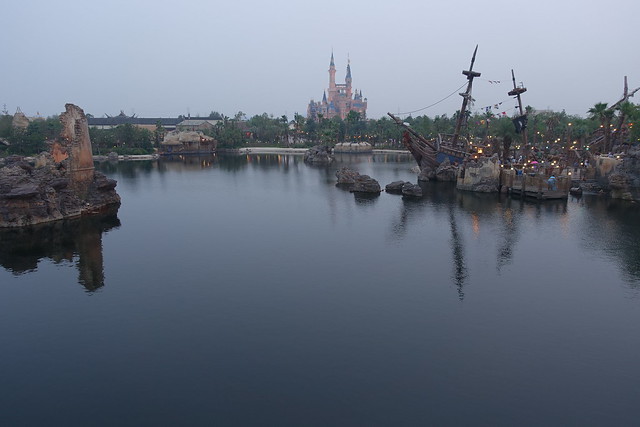
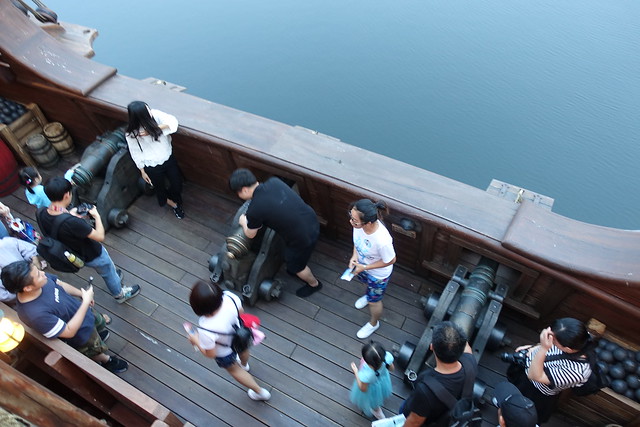
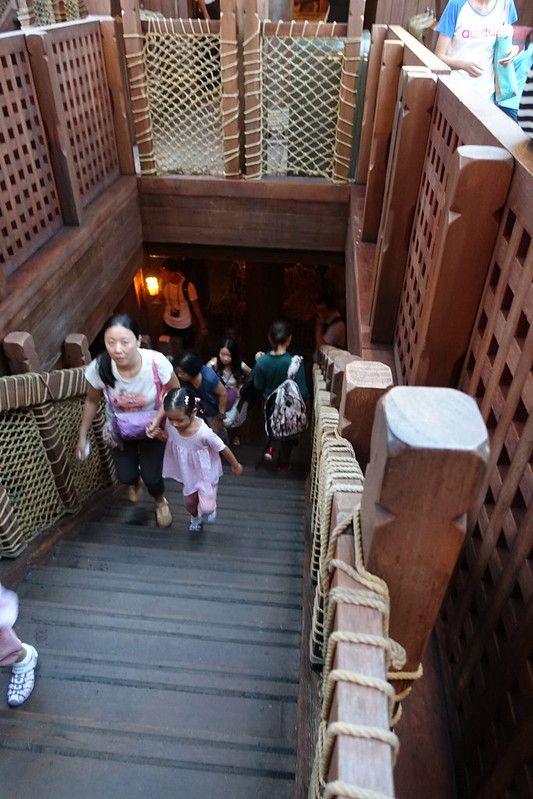
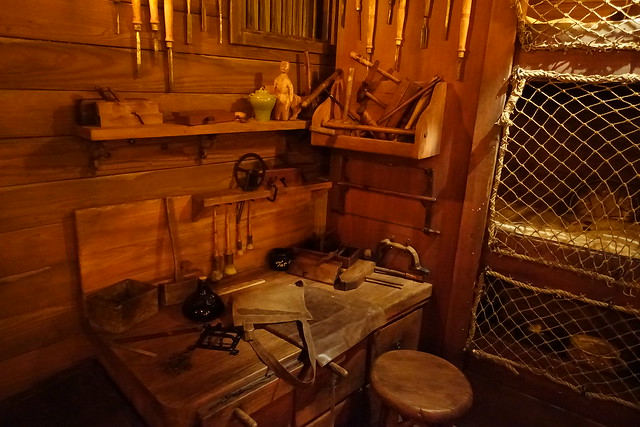
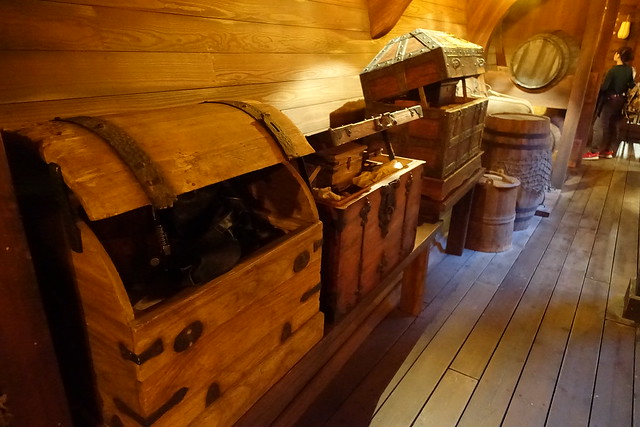
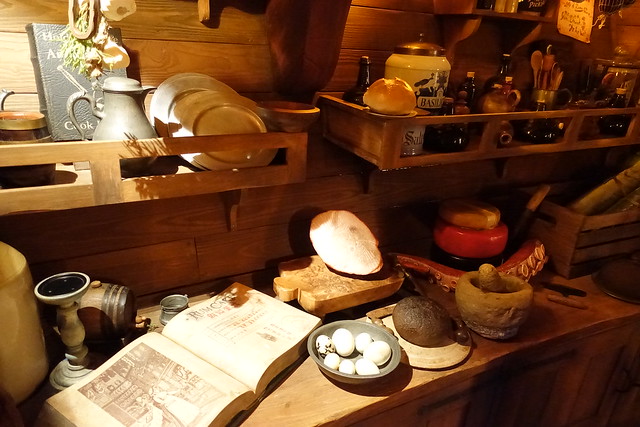

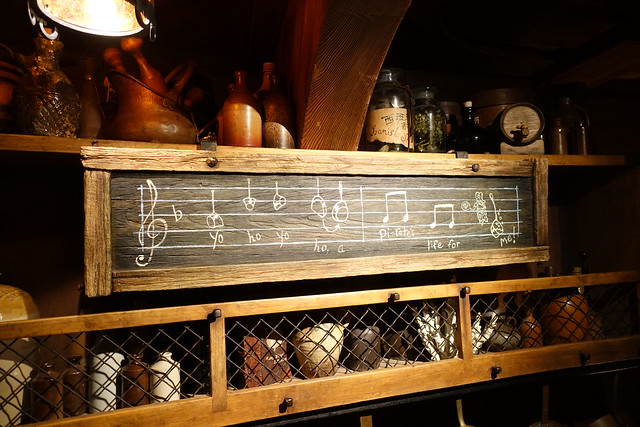
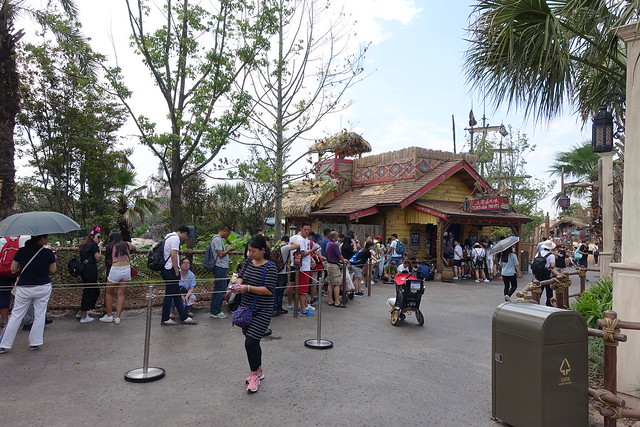

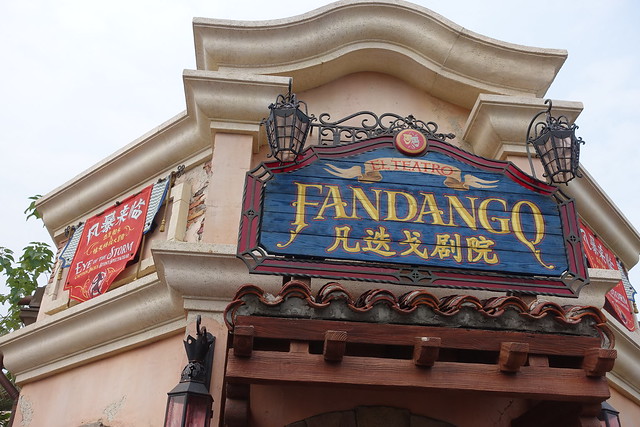
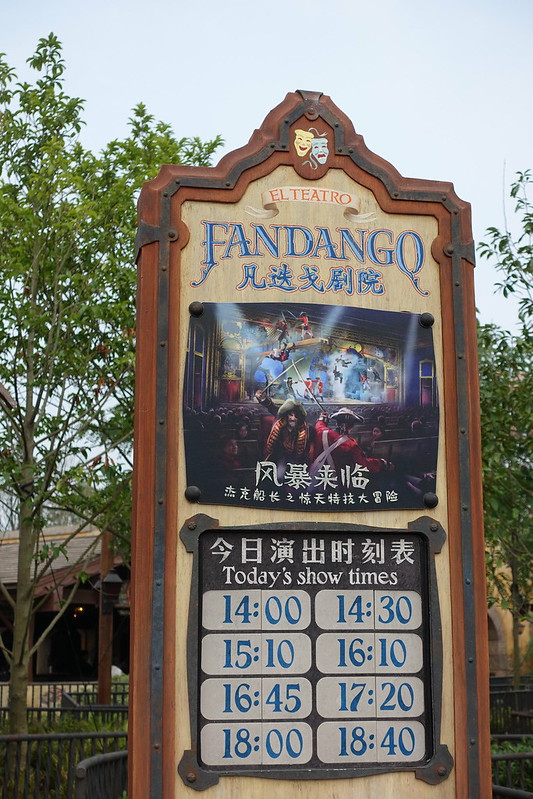
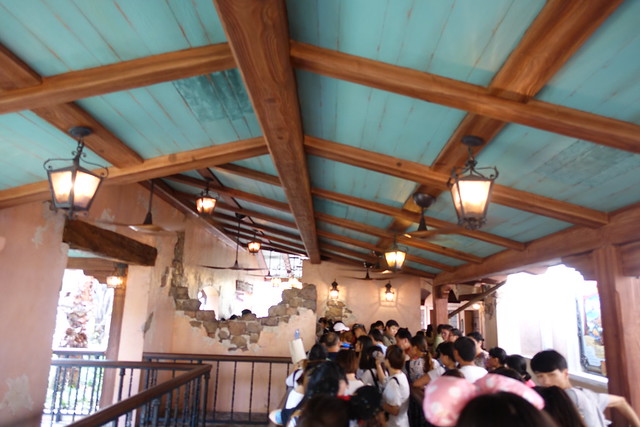
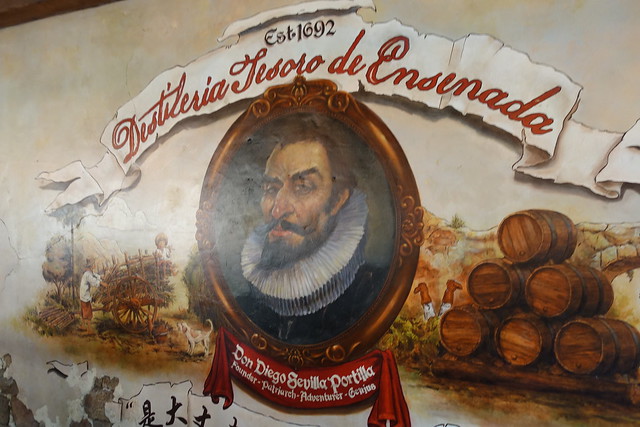
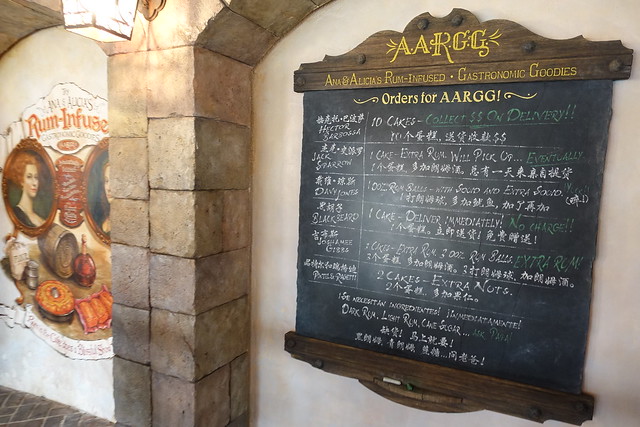
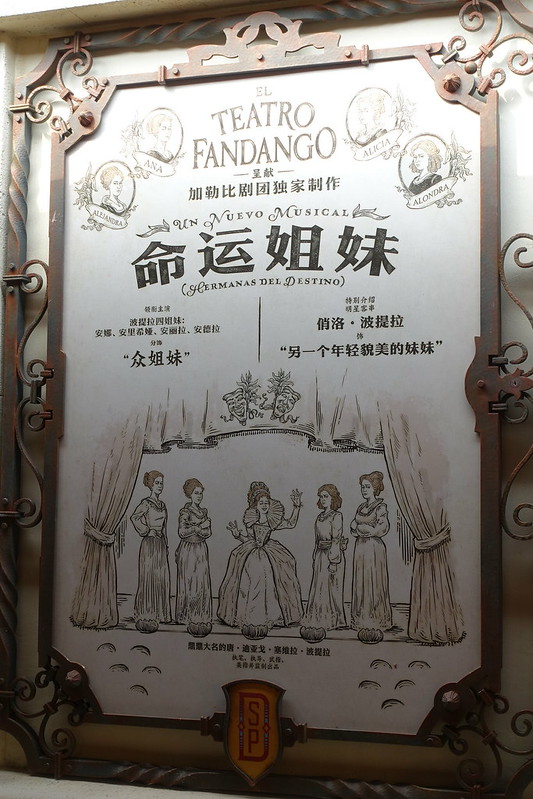
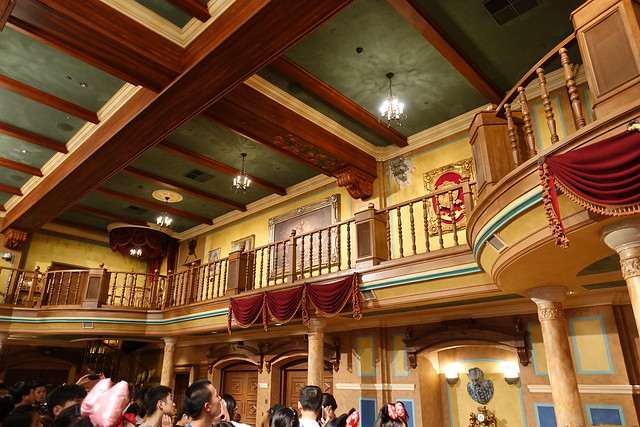
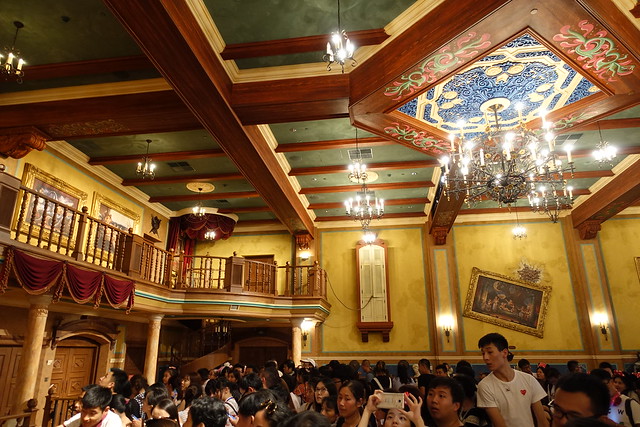
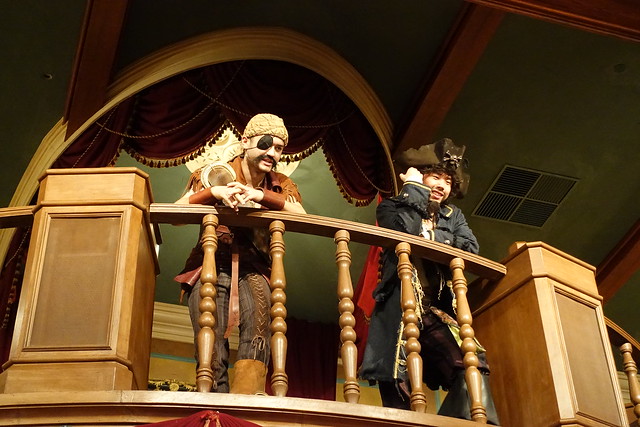
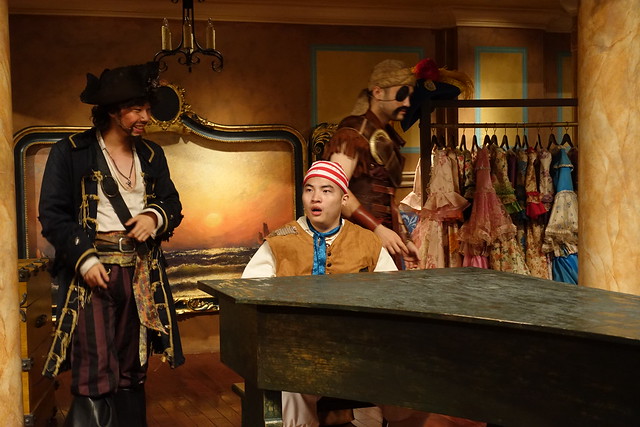
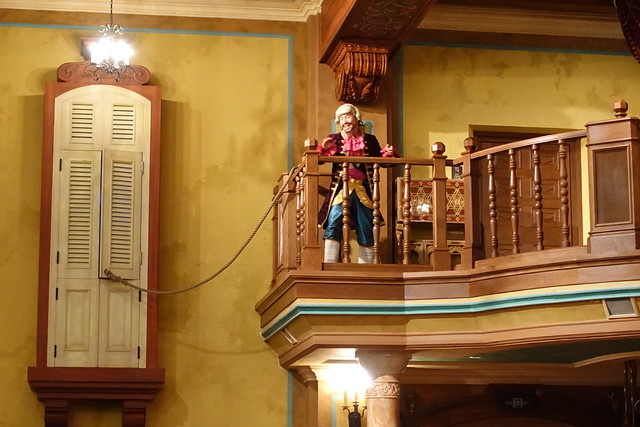
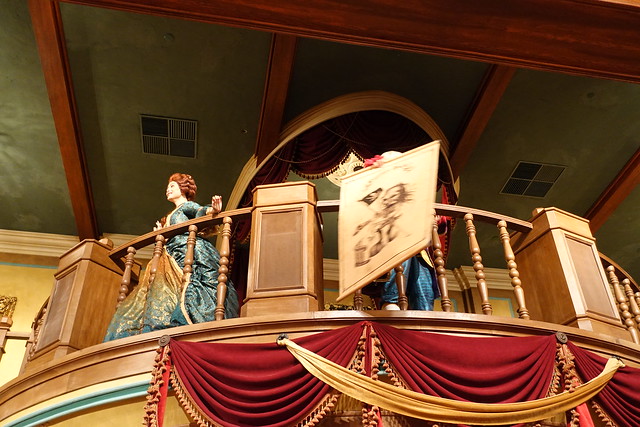
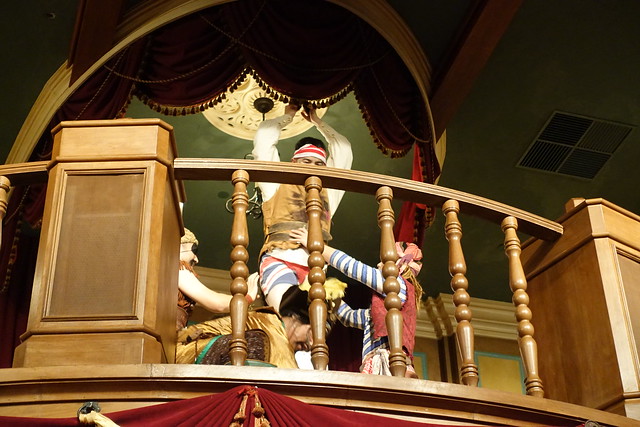
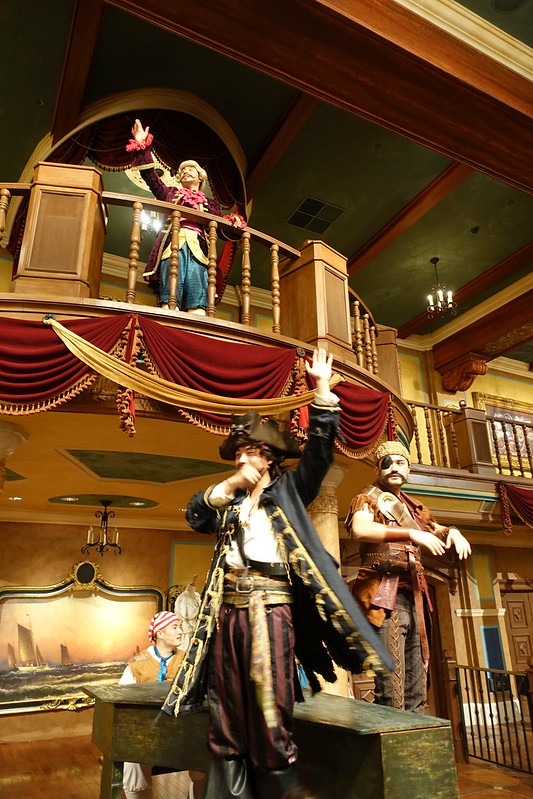
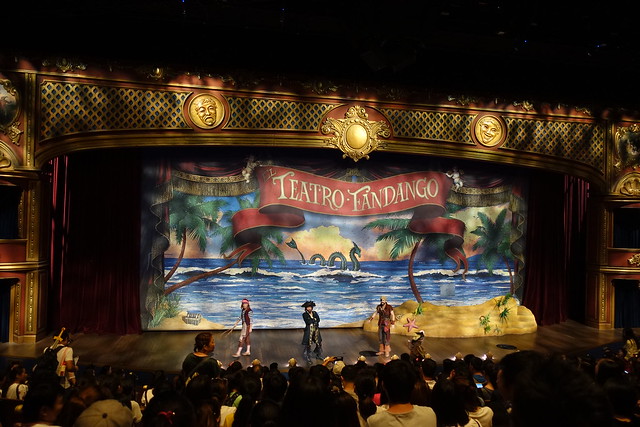
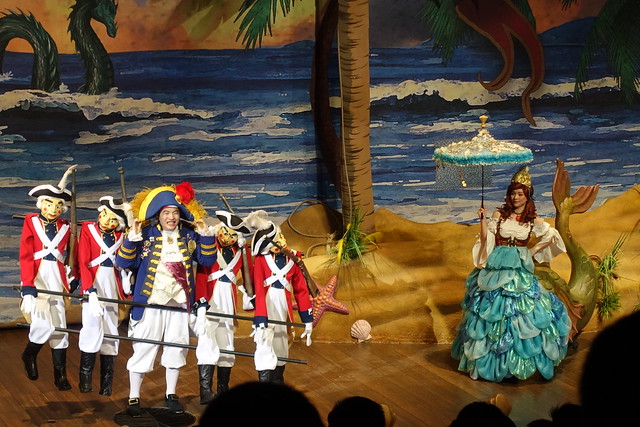

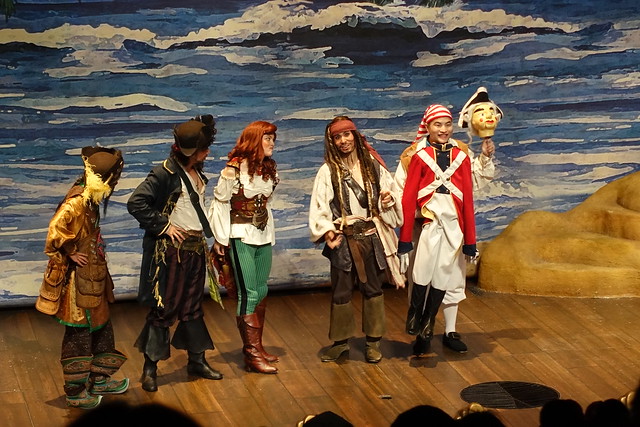
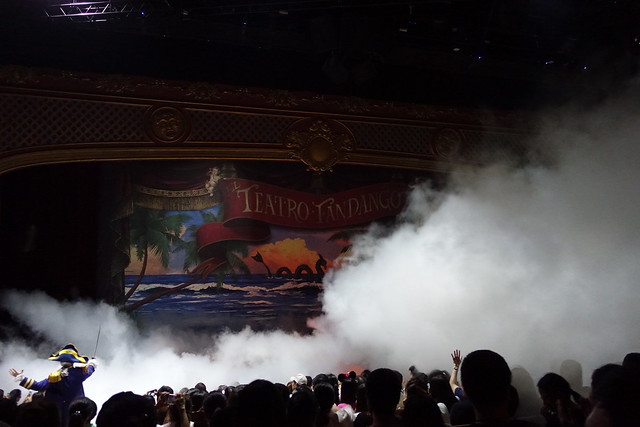
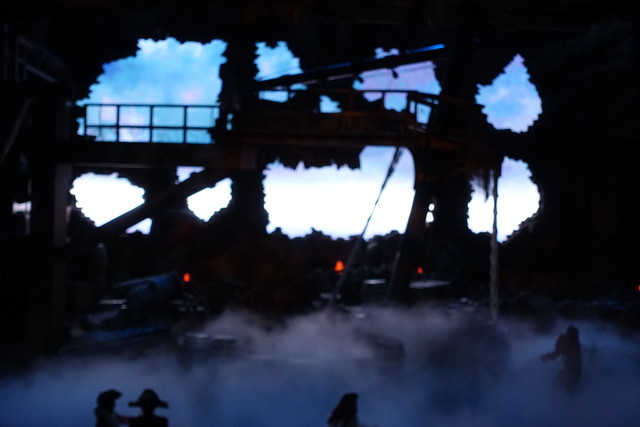
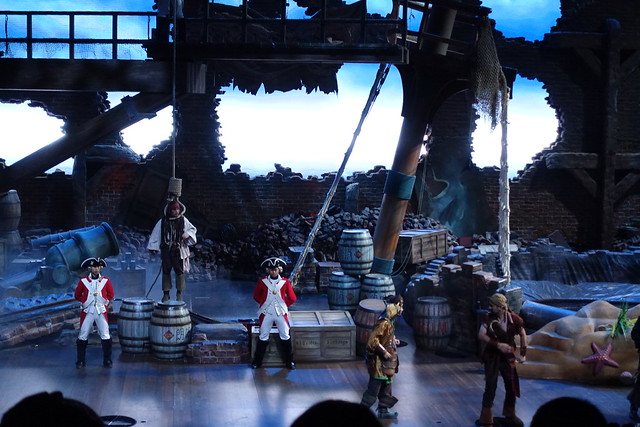
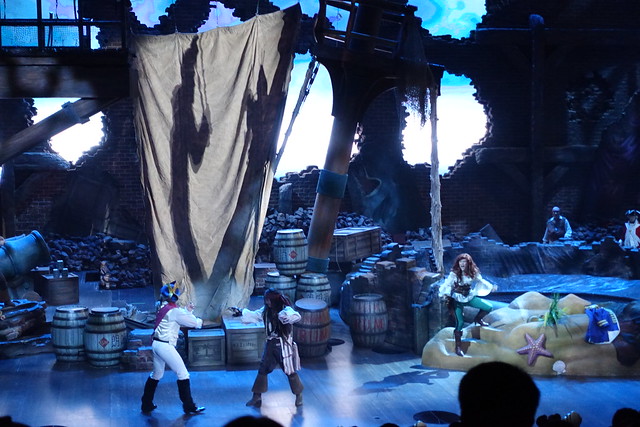
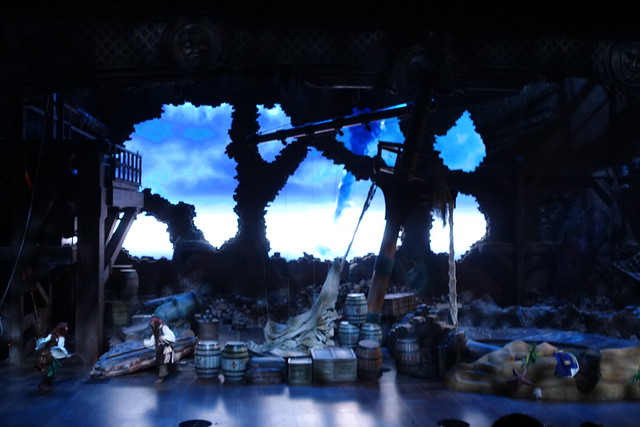
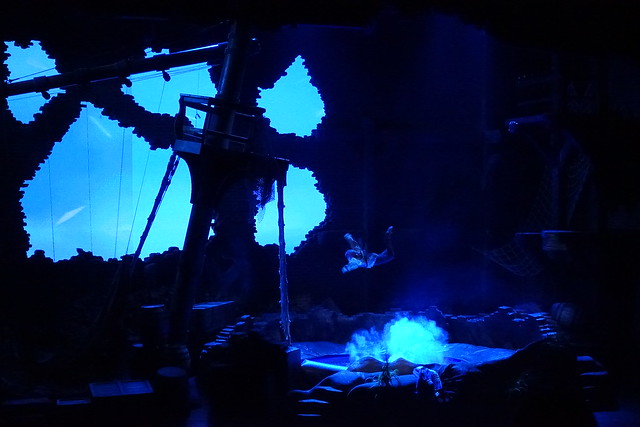
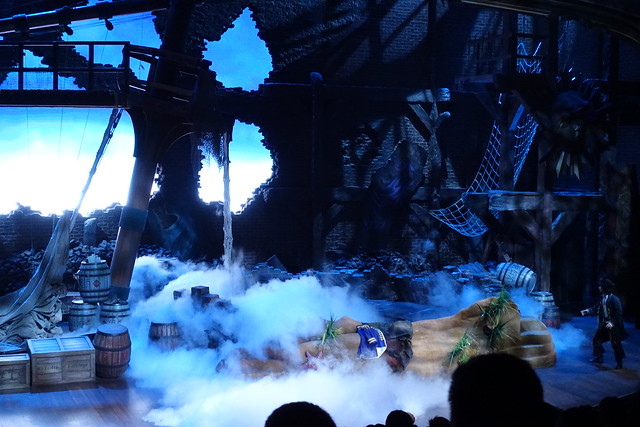
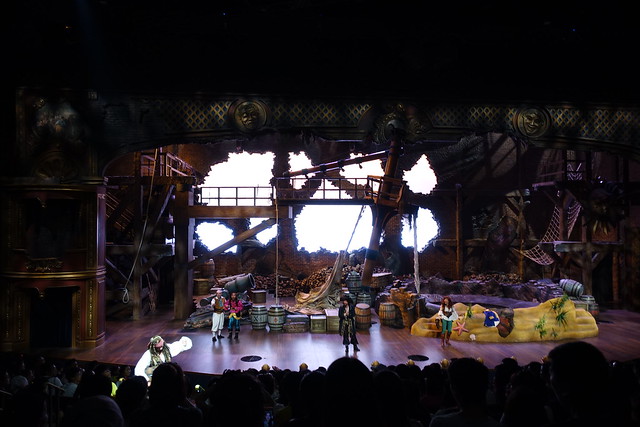
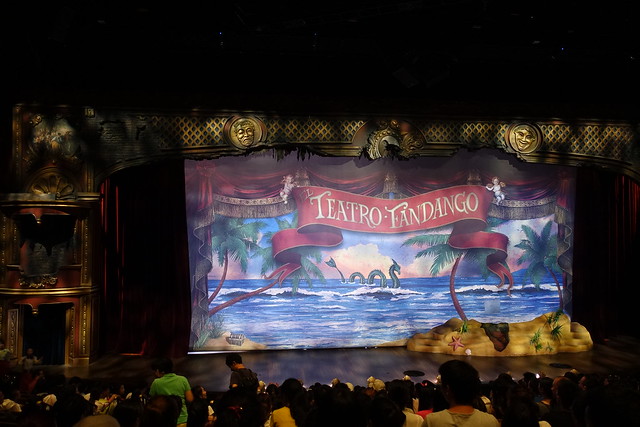
Footnotes & Annotations
[1] These specific technical issues include the quality of media on the giant wrap-around screens; it’s a little too crude and video game-like for the scale it’s being projected at, not significantly more realistic than the media on Knott’s real-time rendered Voyage to the Iron Reef, and doesn’t quite match the feel of the physical sets; hopefully this is something that can be upgraded in the near future. The lack of animatronic figures is also felt; I’ve heard that it was originally budgeted for more swashbuckling characters but had to be cut to all but the four seen on the ride. Lastly, the final backwards coaster-like drop should be a cool finale and I support the reason for putting it there (no Pirates ride is complete without a drop of some kind), but it doesn’t hide the fact that it takes place in an industrial hallway very well, and is a little too shallow to block the view from the previous scene, becoming the one place where the immersion is lost somewhat and it feels more like a “ride”. All relatively minor quibbles that do little to detract from the attraction’s core strengths.
[2] No complaint as Zimmer’s soundtrack is probably one of the best things from the movie franchise, and its placement during the battle scene is likely the one positive contribution the films had on the Disneyland original attraction following its 2006 renovation.
[3] Which I could have well expected; these are the same writers working with the same characters that provided the new dialogue for the American versions. This includes what I still consider to be the single worst line of script in any major theme park, where in response to the iconic motif of “dead men tell no tales,” the writers decided to have Davy Jones appear from nowhere just to say “Ah, but they do tell tales! So says I, Davy Jones!” It’s almost breathtaking how quickly and efficiently this single line breaks as many rules of screenwriting as possible. Interestingly, Yiyan mentioned to me that the dialogue sounded even worse in Chinese, as she could tell it had been originally written in English and then translated back too literally. “It’s obvious to Chinese that westerners made this.” Her overall opinion of the ride, while still very high, seemed a few degrees cooler than mine after our first ride, so perhaps that was the difference?
[4] The theme of historical materialism is established by the very first scene, where we see the bourgeois opulence of the land-owner’s plantation house dialectically opposed against the swamp-dwelling proletariat who has become alienated from the means of production. From this present-day situation of material fact, we then travel back in time to reveal the historical struggle between classes, with the pirates attempting to overthrow the capitalist society of Puerto Dorado by destroying the military power used to suppress the people, kidnapping the political class, and upending institutional structures of social relations between sexes… all with a jaunty song to propagandize the vision of a new lifestyle shared between comrades. However, the pirates’ attempt at revolution ultimately fails because their pursuit of redistributed material wealth leads them to inadvertently destroy the means of production, ensuring they will die with great material wealth but no means to further propagate their reorganization of the classes. The dialectic then returns us to present day New Orleans, the American city most ripe to begin a future class revolt.
[5] Heidegger’s philosophical conceptions of time and being-towards-death both permeate the attraction. In it, the pirates, or Dasein (literally translated as “being-there”, roughly meaning “human being” but in the abstract) attempt to assert the authenticity of their Being-in-the-world by controlling and reshaping this world according to the possibility-for-the-world they most desire. However these possibilities are of course limited by the historicality of their existence, which manifest their Being-in-the-world in accordance to a particular history and tradition, namely, a pirate’s life. (This historicality is also juxtaposed against an earlier scene in which Dasein is manifest as a swamp-dweller with decidedly more limited historical possibilities, piracy from the rich plantation-owners no longer being a tradition available to him.) The Dasein pirates’ inability to escape from the bounds of time is seen in the way they are destined to eternally repeat their limited historical moment ad infinitum. It’s against this background that their ultimate state of Being, Being-towards-death, plays out. All Daseins, whether in the Caribbean, New Orleans, or Anaheim, can only come to understand the importance and authenticity of their own Being by measuring it against the historical certainty of their own eventual death. Thus the attraction’s strangely metaphysical representation of time and place. (Apologies, it’s been a little while since I’ve read Heidegger.)
Oh wow, every 30 mins for the stunt show? I think there was at least an hour gap on my visit. It’s exactly what I wanted from a stunt show though, not like Indiana Jones and Motors Action at the other Disney parks where it “explains” how stunts are performed.
Didn’t know the dialogue in Battle for the Sunken treasure was so basic, bit of a shame but not the worst thing ever. I’m still in awe of how it makes you feel like you’re rising from the bottom of the ocean, that blew my mind.
It doesn’t surprise me that they found ways to tighten the performance schedule since opening day, there’s no way a cast and crew could manage that turnover on day one. I’d imagine some of the coolest stunts are happening backstage. Even at 30 minute intervals, though, the show still has pretty limited capacity compared to most of the rides. I’m assuming maybe somewhere between 400-600 seats in the theater, so 800-1200 per hour? Unless the theater’s much bigger than I remember, but I don’t think they could load a much bigger audience than that into a theater as quickly as they do.
you are one cynical guy, by the way siren’s revenge is the name of the ship.
Treasure Cove was “my” area with regards to on-site thematic execution at Shanghai Disney. I loved your review and appreciate the comments.